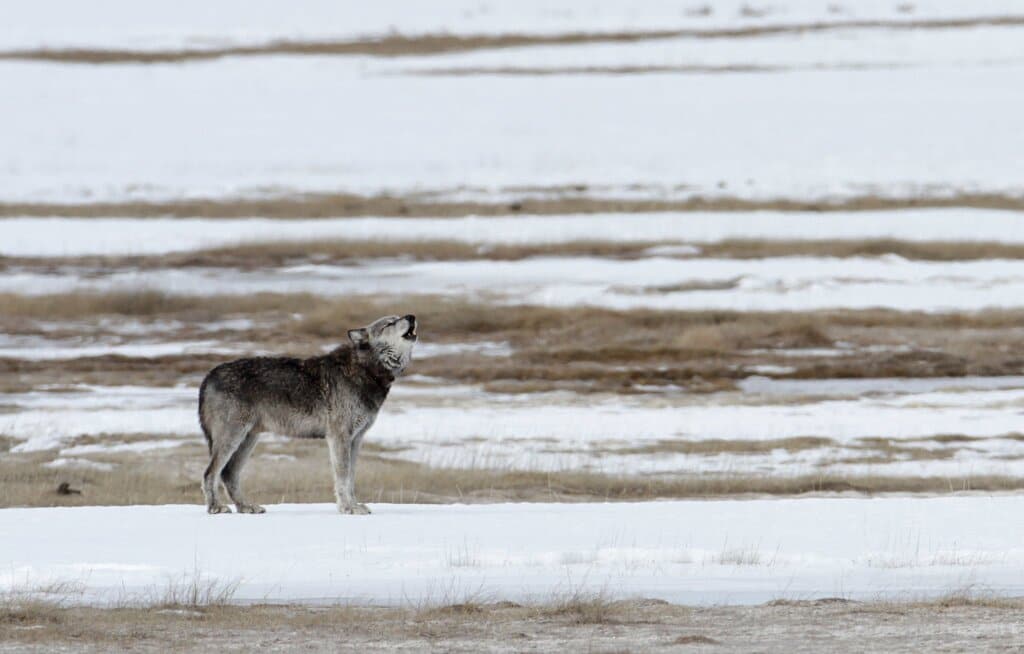Assisted migration, also known as managed relocation, involves removing individual plants or animals from an area which has, or will become, unsuitable due to climate change, and moving them to a new site where conditions will be more suitable in order to possibly prevent the extinction of species and help maintain crucial ecosystem functions. But relocation introduces a host of different issues. So, should we move endangered species to protect the them or do so as a last resort?
—
The Global Extinction Crisis
Climate change is one of the greatest challenges animals face. In fact, the world is facing an extinction crisis. Interestingly, the major problem with climate change is not so much that the climate is changing, but that it is changing faster than species can move or adapt. Dozens of species of reptiles and amphibians in Madagascar, for example, have been spotted moving towards higher altitudes in search of cooler climates. Some of our most species-rich areas of the globe and most valued ecosystems, such as coral reefs and rainforests, may cease to exist in their current form as a result of climate change. According to Extinction Risk from Climate Change, a science journal published in 2004, it is estimated that millions of species worldwide could face extinction as a result of climate changes predicted to occur in the next 50 years.
The Mountain Pygmy-Possum, an example of a species facing climate extinction, is a tiny mammal that currently resides on three snowy mountain tops in Victoria and New South Wales. As temperatures gradually rise, the length of time in which snow stays on mountain tops decreases rapidly, thus lessening the habitats available for the possums to hibernate – the marsupial hibernates up to seven months under the snow. This means that possums come out of winter hibernation earlier, and yet are unable to find enough food, while seeing an influx of feral predators that previously had found the area inaccessible because of snow covers.
In cases where species are threatened by invasive species or destruction to their habitat, standard conservation actions alone such as creating conservation reserves may offer insufficient protection. Instead, scientists have also resorted to the radical action of managed relocation.
You might also like: 12 of the Most Endangered Animals in the World
Should We Move Endangered Species?
Managed relocation is the movement physical movement of plants or animals from an area that will become unsuitable to locations where the climate is predicted or assessed to be suitable but where the animals or plants have never occurred before. The benefits it brings are based on three aspects – the likelihood it will go extinct in its original habitat since the local climate has become hostile, the likelihood that a breeding population can be established at a new site, and the value or importance of the species.
The concept of relocating endangered species is actually not new in conservation science. In 1994, the US Fish and Wildlife Service transported 150 grey wolves from Canada all the way to Yellowstone National Park to establish a new population. Four years later, the grey wolves were removed from the list of endangered species. In Australia alone, over 200 reintroductions of 42 vertebrate species have been undertaken for conservation purposes. Currently, Australia’s rarest reptile, the Western Swamp Tortoise from Perth in Western Australia, is facing extinction because of declining seasonal rainfall, which is drying up the swamps the tortoise calls home. To stop them from becoming extinct, scientists are considering new potential sites far to the South of its current home range.
Although moving endangered species in the past has shown obvious benefits to endangered species and the environment, there is also the other side of the other side of the relocation story. While Australia might be performing well in many aspects of managed relocation projects, it also has a relatively higher failure rate than other nations around the world, with predation of cats and foxes being the biggest reason for failure. Also, one of the biggest worries in assistant migration is not whether a species will be successful in its new environment, but whether it will be too successful and grow to become an invasive species, such as Kudzu, the Gypsy Moth, or the Giant Nutria, that have overrun parts of Louisiana. This ecological cost depends on the potential of a moved species adversely affecting the ecosystem at its new location. Species are therefore considered for relocation only if the benefit of doing so is greater than the ecological cost.
So, should we move endangered species? Despite the strategy’s shortcomings, managed relocation emerged as a potential intervention strategy in the toolbox of biodiversity management for a reason. The pace of modern climate change demands decision-making with imperfect information, even though comparing benefit and risk is challenging due to ecological data providing inexact evidence on the degree of anthropogenic threats to biological diversity. The magnitude of projected climate change suggests that humans may be forced to choose between the alternatives of witnessing extinctions and intentionally manipulating species’ distributions in efforts to prevent extinction and maintain biodiversity. Ultimately, the risk of species extinctions from climate change is too large to summarily discount managed relocation without first carefully evaluating its benefits and dangers in a nuanced way. Beginning this process now will better position us to make informed decisions in the years ahead, as threats of climate-mediated species extinctions become more common.
Featured image by: Yellowstone National Park/Flickr


















